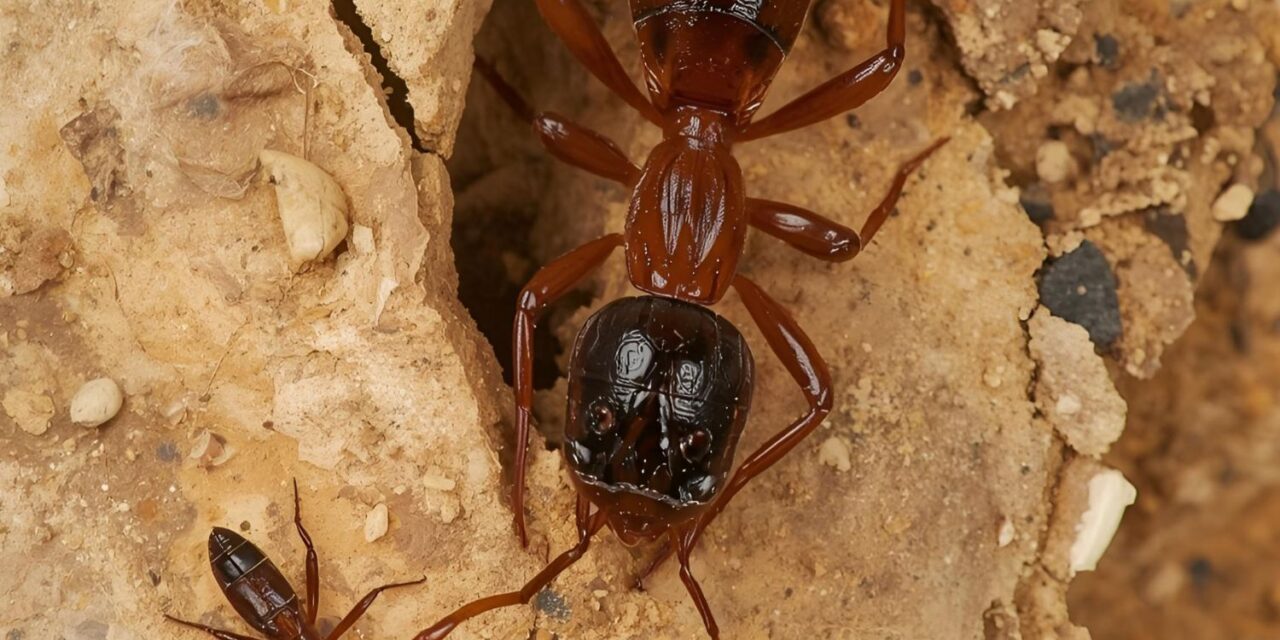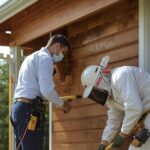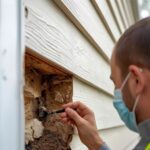Estimated reading time: 9 minutes
Key Takeaways
- Pre-construction termite treatment is a *proactive and essential* preventative measure, far more cost-effective than reactive post-construction treatments.
- It involves creating a comprehensive protective barrier in the soil and foundation using both *chemical* (repellent or non-repellent termiticides) and *physical* methods.
- The core process includes strategic `soil termite treatment` at multiple stages: footings, backfill, under-slab, and perimeter, ensuring a continuous defense.
- **Foundation termite proofing** meticulously seals off critical entry points like slab edges, expansion joints, and utility pipe penetrations, crucial for preventing termite access.
- Investing in this treatment offers *long-term protection*, significant cost savings, increased property value, compliance with regulations, and reduced future chemical use.
- Selecting a *licensed, experienced professional* with strong warranties and adherence to EPA-approved methods is paramount for effective and lasting protection.
Table of contents
- Secure Your Investment: A Comprehensive Guide to Pre-Construction Termite Treatment
- Key Takeaways
- 1. Why Pre-Construction Termite Treatment is Your Best Defense
- 2. Understanding Anti-Termite Pre-Construction: What It Is and How It Works
- 3. The Core Process: How Soil Termite Treatment Secures Your Future Home
- 4. Critical Application: Ensuring Foundation Termite Proofing
- 5. The Undeniable Benefits of Investing in Pre-Construction Termite Treatment
- 6. When to Act: Timing Your Anti-Termite Pre-Construction Service
- 7. Choosing the Right Professional for Your Pre-Construction Termite Treatment
- Conclusion
- Frequently Asked Questions
Building a new home or business is an exciting journey, a chance to create something lasting and valuable. But beneath the surface, a silent threat lurks that can undermine your investment before you even move in: termites. This is where pre construction termite treatment becomes your ultimate safeguard. It’s a fundamental preventative measure specifically designed to protect new buildings from potential termite infestations.
Unlike post-construction treatments, which are reactive—meaning they deal with an existing termite problem—pre construction termite treatment is proactive. It aims to establish a protective barrier, a strong defense line, even before termites can gain access to your structure. Experts widely endorse this forward-thinking approach as the most effective and economical way to safeguard a property from the extensive damage these tiny pests can inflict.
In this comprehensive guide, we’ll explore why pre construction termite treatment is so crucial. We’ll dive into how anti-termite pre-construction methods work, looking at the process of soil termite treatment and the absolute criticality of foundation termite proofing. We will also cover the many key benefits, the best timing for these treatments, and how to choose the right professional to protect your future home.
1. Why Pre-Construction Termite Treatment is Your Best Defense
Investing in a new building is a major life decision, and protecting that investment should be a top priority. This is why pre construction termite treatment is a non-negotiable step for new builds and essential for any property owner looking to secure their future.
Termites are often called “silent destroyers” for a very good reason. They can cause significant structural damage to homes and buildings without any obvious signs until it’s too late. Imagine a hidden army slowly eating away at the very bones of your house—that’s what termites do. This hidden damage can lead to incredibly costly repairs, weaken the safety of your home, and drastically reduce its value.
The scale of this problem is huge. A report from the National Pest Management Association (NPMA) estimates that termites cause over $5 billion in property damage annually in the United States alone. This staggering figure highlights the widespread and serious nature of termite threats.
By choosing pre construction termite treatment, you create a robust defense right from the ground up. This means you are stopping termites before they even have a chance to enter your home. This proactive measure is far more cost-effective than dealing with an established infestation later. When termites have already settled in, you’ll face expensive structural repairs, specialized treatments, and maybe even the inconvenience of moving out temporarily during extensive work.
Ultimately, this essential preventative measure provides long-term peace of mind. It acts as an invisible shield, protecting the homeowner’s significant investment for many years to come. Thinking ahead and treating your new build for termites before it’s finished is smart planning and the best way to keep your home safe and sound.
2. Understanding Anti-Termite Pre-Construction: What It Is and How It Works
Anti-termite pre-construction treatments involve creating a comprehensive barrier system. This system is applied to the soil and foundation *before* the building is even fully put together. This early intervention is key to effective termite protection.
The main goal of anti-termite pre-construction is to make the soil surrounding the foundation either toxic (poisonous) or repellent (something termites want to stay away from). This stops them from tunneling through the ground to reach the wooden parts of your new building, which is their primary food source. By creating this barrier, we cut off their access right at the source.
There are two main types of barriers used in anti-termite pre-construction:
Chemical Barriers: Creating a Treated Zone
Chemical barriers are the most common method for soil termite treatment. These involve applying special liquid termiticides to the soil around the foundation, creating what’s called a “treated zone.” Think of it like a protective moat around your castle.
- Long-Lasting Protection: Modern termiticides are designed to be very long-lasting and effective. They are formulated to stay in the soil for years, providing continuous protection against subterranean termites.
- Repellent Termiticides: Some termiticides work by repelling termites. This means termites can sense the chemical and will avoid entering the treated area altogether. They simply turn away from your home.
- Non-Repellent Termiticides: Other termiticides are non-repellent, which means termites can’t detect them. Termites unknowingly tunnel through the treated soil, pick up the active ingredient on their bodies, and then carry it back to their colony. This leads to a “transfer effect” where the chemical spreads throughout the colony, eventually causing its demise. This method can be especially effective at wiping out entire termite nests.
- Safety and Regulations: These powerful chemicals are carefully regulated. The Environmental Protection Agency (EPA) provides extensive resources on pesticides, including termiticides, ensuring they are used safely and effectively to protect both your home and the environment.
Physical Barriers: Blocking Termites Out
Physical barriers are non-chemical methods that create a solid, impenetrable shield that termites simply cannot get past. While chemical treatments are often used for widespread soil termite treatment, physical barriers are excellent for reinforcing specific vulnerable areas.
- Stainless Steel Mesh: Products like TermiMesh use very fine, strong stainless steel mesh. This mesh is installed around pipes, along slab edges, and other potential entry points. The holes in the mesh are too tiny for termites to squeeze through, creating a robust physical block.
- Basaltic Rock Particles: Materials like Granitgard use finely graded basaltic rock particles. These particles are too hard and irregularly shaped for termites to chew through or move aside. They are placed in trenches around the foundation or under slabs to create an impenetrable layer.
- Strategic Application: These barriers are effective for sealing off critical areas where termites might try to enter, such as around plumbing penetrations through the slab or at the expansion joints. They offer a non-toxic alternative or a valuable supplement to chemical soil termite treatment, providing an extra layer of defense against termite invasion.
By combining or choosing between these anti-termite pre-construction methods, new homes can be built with a powerful, long-lasting defense against the constant threat of subterranean termites.
3. The Core Process: How Soil Termite Treatment Secures Your Future Home
Soil termite treatment is the most common and widely recognized method for pre-construction termite control. This process isn’t just one application; it involves several strategic stages during the construction phase to ensure a continuous and unbroken “treated zone” around and under your entire future home. Each step is critical to forming a comprehensive barrier against subterranean termites.
Here’s a closer look at the typical stages of soil termite treatment:
Treatment of Footings and Plinths
The very first layer of defense begins at the lowest part of your home’s foundation. After the foundation trenches have been dug out (excavated) and *before* the concrete is poured for the footings (the widest, lowest part of the foundation that supports the walls), a termiticide is applied.
- Target Area: Both the bottom of these trenches and their sides are thoroughly treated. This creates the essential initial barrier.
- Why It’s Critical: Footings are the first point of contact between your structure and the soil. If termites can get past them, they have an easy path upwards. Treating this area early ensures that this critical entry point is secured from day one.
Backfill Treatment
Once the foundation walls are built on top of the footings, soil is used to fill in the gaps around them. This is known as backfilling. During this stage, the soil being returned to the ground is also treated.
- Continuous Barrier: As the soil is backfilled around the foundation walls, it’s systematically treated with termiticide. This ensures that a continuous chemical barrier extends from the deeper foundation levels all the way up to the ground level.
- Preventing Vertical Access: This step prevents termites from tunneling up alongside the foundation walls to reach the building above ground.
Slab Treatment (Under-Slab Treatment)
For homes built with a concrete slab foundation, this is a hugely important stage. Before the concrete slab is poured, the entire area beneath where the slab will sit is thoroughly treated.
- Full Coverage: The whole surface of the prepared ground under the slab is sprayed with termiticide.
- Critical Areas: Special attention is paid to crucial areas such as around utility pipes (like water pipes or electrical conduits) and expansion joints in the slab. These are common weak points where concrete might crack or where pipes penetrate, creating tiny openings for termites.
- Stopping Upward Movement: This treatment prevents termites from building tunnels through the soil and then finding their way up through cracks in the slab or around utility penetrations directly into the living spaces of the building.
Perimeter Treatment
Once the concrete slab is poured and the foundation walls are fully completed, a final perimeter treatment may be applied. This is typically done to the exterior soil around the entire building.
- Reinforcing the Barrier: This step helps to ensure a completely sealed protective zone around the entire structure, catching any termites that might try to approach from the outside.
- Completing the Shield: It adds another layer of defense, making sure there are no gaps in the soil termite treatment barrier.
It’s vital to emphasize that the timing of these pre construction termite treatment applications is incredibly important. The treatments are strategically applied at different stages of construction, usually after excavation and before concrete pouring, to guarantee maximum coverage and effectiveness. Working closely with your builder and pest control expert ensures each stage is treated correctly and efficiently, securing your home from subterranean invaders.
4. Critical Application: Ensuring Foundation Termite Proofing
Foundation termite proofing is arguably the most vital component of pre construction termite treatment. Why? Because the foundation serves as the primary gateway for subterranean termites to enter a building. If termites can breach the foundation, they have direct access to the rest of the structure, including the wooden elements they crave.
This aspect of termite prevention focuses specifically on creating an impenetrable barrier around and beneath the foundation. It’s about sealing off every potential entry point, making it impossible for termites to tunnel into your new home.
Here are the key areas targeted for meticulous foundation termite proofing:
- Footings and Plinths: As mentioned in the soil termite treatment process, these foundational elements are treated very early on. The soil beneath and around the footings and the base of the plinth walls (the lower part of a wall that supports the main structure) are doused with termiticide. This creates the very first line of defense, stopping termites before they even have a chance to climb higher. This initial barrier is fundamental to anti-termite pre-construction.
- Slab Edges and Expansion Joints: These are notorious weak points in slab foundations. The edges of the concrete slab, where it meets the ground, and any expansion joints (deliberate gaps in the concrete that allow for movement) can provide tiny openings for termites. During pre construction termite treatment, special attention is given to thoroughly treat these areas to seal off these vulnerable entry points. Termites often exploit these hidden crevices.
- Utility Pipe Entry Points: Any place where a pipe, conduit, or cable penetrates the foundation or slab creates a direct pathway for termites. These are high-risk areas. For example, water pipes, drainage pipes, and electrical conduits all require meticulous treatment around their entry points. The soil or concrete immediately surrounding these penetrations is carefully treated to ensure no termite can slip through these gaps. This careful sealing is a critical part of comprehensive foundation termite proofing.
- Wall-Floor Junctions: In both slab-on-grade and crawl space foundations, the area where the walls meet the slab or the foundation perimeter is another crucial point. Termites can tunnel up through the soil and into the gap between the foundation and the first wooden elements of the wall. Thorough anti-termite pre-construction ensures that this junction is protected, preventing termites from ascending into the wall cavities.
The overarching goal of foundation termite proofing is to establish a continuous, unbroken chemical or physical barrier. This barrier either physically blocks termites, making them unable to pass, or poisons them upon contact, preventing them from ever reaching the wooden components of the new structure. By focusing intensely on the foundation, you are effectively cutting off the termites’ primary access route, thereby safeguarding the entire building from these destructive pests. This critical step ensures your home is built on a secure, termite-free base.
5. The Undeniable Benefits of Investing in Pre-Construction Termite Treatment
Choosing pre construction termite treatment for your new building is not just an expense; it’s a smart investment that yields substantial and long-lasting benefits. These advantages go far beyond simply avoiding a pest problem.
Here are the undeniable reasons why anti-termite pre-construction is worth every penny:
Long-Term Protection and Peace of Mind
- Decades of Defense: A properly applied pre construction termite treatment provides many years, often decades, of robust protection against termite infestations. This ensures the structural integrity of your home remains strong and secure.
- Worry-Free Living: Knowing that your most valuable asset is protected from destructive subterranean termites offers incredible peace of mind. You won’t have to constantly worry about hidden damage or the sudden discovery of a termite colony. This allows you to fully enjoy your new home without the lingering threat of these silent destroyers.
Significant Cost Savings
- Prevention vs. Repair: This is perhaps the most compelling financial benefit. Pre construction termite treatment is dramatically more economical than dealing with a reactive infestation. If termites get into your home, you could face incredibly expensive structural repairs, which might involve replacing damaged wooden beams, floors, or wall studs.
- Hidden Costs of Infestation: Beyond structural repairs, an established infestation often requires specialized, intensive treatments that can be disruptive and costly. There might be additional expenses like drywall repair, repainting, or even temporary relocation during extensive work. Proactive prevention avoids all these headaches and financial drains.
Increased Property Value and Marketability
- Attractive to Buyers: A property that has been protected from termites from the ground up is inherently more attractive to potential buyers. It signals a well-built, well-maintained home.
- Retained Value: Termite damage can significantly devalue a property. By preventing such damage, your home retains its maximum market value.
- Warranty as a Selling Point: In many regions, a transferable pre-construction termite warranty is a significant selling point. It provides future homeowners with assurance and protection, making your property stand out. (Source: Real estate industry reports, financial advisories on property investment). Buyers are often willing to pay more for a home with guaranteed termite protection.
Compliance with Regulations
- Building Code Requirements: Many local building codes, especially in areas prone to termite activity, may require pre-construction termite treatment as a mandatory step for new construction.
- Mortgage Lender Requirements: Similarly, some mortgage lenders may require proof of pre-construction termite treatment before approving a loan, especially for homes in high-risk zones. Meeting these requirements upfront simplifies the building and purchasing process. (Source: Government housing guidelines).
Reduced Future Chemical Use
- Sustainable Approach: A robust initial anti-termite pre-construction treatment can significantly reduce or even eliminate the need for future remedial chemical applications. This means fewer chemicals being introduced into and around your home over its lifespan.
- Environmental Benefits: This contributes to a more sustainable and environmentally conscious approach to pest management. By getting it right the first time, you minimize ongoing chemical exposure for your family, pets, and the local ecosystem.
In summary, the decision to invest in pre construction termite treatment is a wise one, offering financial security, long-term protection, and invaluable peace of mind for you and your property. It’s an investment that truly pays off over the lifetime of your home.
6. When to Act: Timing Your Anti-Termite Pre-Construction Service
For anti-termite pre-construction service to be truly effective, it requires precise timing and careful coordination with your construction schedule. Applying termiticides or installing physical barriers at the correct stages of building ensures maximum coverage and creates an unbroken protective shield around your new home. Missing these crucial windows can leave gaps in your defense.
The ideal stages for application are carefully planned to coincide with specific construction milestones:
- After Footing Excavation, Before Concrete Pouring: This is one of the earliest and most critical stages.
- What happens: Once the trenches for the footings have been dug out, but *before* any concrete is poured into them, the soil at the bottom and sides of these trenches is treated. This creates the very first barrier against termites from the deepest part of your foundation.
- Why the timing is vital: At this point, the soil is fully exposed, allowing for thorough saturation and complete coverage of these foundational elements. Once concrete is poured, these areas become inaccessible.
- After Foundation Walls are Built and Backfilled, Before Slab Pouring: This stage covers the main body of your foundation.
- What happens: After the foundation walls have been constructed on the footings, and the soil has been backfilled around them, the area beneath where the concrete slab will be poured is treated. This includes the entire surface of the ground under the slab and often involves treating the soil directly around the exterior of the foundation walls up to the grade level.
- Why the timing is vital: This ensures that the ground directly underneath your home, and the soil immediately surrounding your foundation walls, forms a continuous treated zone. It blocks termites from tunneling up through the slab or along the exterior of the foundation.
- Before Final Grading and Landscaping: This is often the final exterior treatment.
- What happens: Once the main structural work is done, but before the final layers of topsoil, lawns, or garden beds are put in place, an exterior perimeter treatment might be applied. This targets the soil directly adjacent to the outside of the completed foundation.
- Why the timing is vital: This provides comprehensive coverage around the entire external perimeter of the building. It ensures that the protective barrier extends right up to the finished ground level, preventing termites from simply bypassing earlier treatments by tunneling near the surface.
It is absolutely crucial to stress the importance of close coordination with your builder or general contractor. This partnership ensures that the pest control professionals can access the necessary areas at the precise correct stages without disrupting the overall construction timeline or, more importantly, compromising the integrity and effectiveness of the pre construction termite treatment. Open communication between all parties involved—the homeowner, the builder, and the pest control company—is key to a successful, long-lasting termite defense system. (Source: Pest control industry best practices, construction project management guidelines). This team effort will safeguard your investment from day one.
7. Choosing the Right Professional for Your Pre-Construction Termite Treatment
The effectiveness and longevity of your pre construction termite treatment depend almost entirely on the expertise of the professionals you choose. This is not a service to skimp on or trust to just anyone. Selecting a reputable and experienced pest control provider is paramount to ensuring your new home receives the robust protection it deserves.
Here are key factors to consider when choosing a professional for your anti-termite pre-construction and foundation termite proofing:
- Licensing and Certification:
- What to look for: Ensure that the pest control company and all its technicians are properly licensed by your state or local regulatory bodies. This indicates that they meet professional standards, have undergone necessary training, and are authorized to apply restricted-use pesticides like termiticides.
- Why it matters: Licensing ensures accountability and adherence to safety protocols and industry best practices. Without it, you risk unprofessional work and potentially dangerous chemical applications. (Source: Consumer protection agencies, state agricultural departments regulating pest control).
- Experience and Specialization:
- What to look for: Prioritize companies with a proven track record specifically in pre-construction termite control services. Ask about their experience with new builds similar to yours.
- Why it matters: Pre construction termite treatment is a specialized field. It requires a deep understanding of termite biology, construction practices, and how termites exploit specific building vulnerabilities. Experienced professionals know exactly where and how to apply treatments for maximum effectiveness.
- Guarantees and Warranties:
- What to look for: Reputable companies will offer clear, often transferable, warranties for their pre-construction treatments. Understand the terms of the warranty, including its duration, what it covers (e.g., re-treatment, damage repair), and if it can be transferred to a new owner if you sell your home.
- Why it matters: A strong warranty provides peace of mind, not just for the initial homeowner but also for potential future buyers. It demonstrates the company’s confidence in their work and commitment to standing behind their service.
- Approved Chemicals and Methods:
- What to look for: Verify that the company uses only EPA-approved termiticides and strictly follows industry best practices for application techniques. Ask about the specific products they intend to use and request safety data sheets if you’re concerned.
- Why it matters: Using approved chemicals ensures effectiveness and minimizes environmental and health risks. Proper application techniques are crucial for creating a continuous and long-lasting barrier. Unapproved chemicals or shoddy application can render the treatment useless or even harmful.
- References and Reviews:
- What to look for: Check client testimonials, online reviews, and ask for references. Speak to previous clients to gauge the company’s professionalism, service quality, reliability, and responsiveness.
- Why it matters: Reputable companies will be proud to share their positive client experiences. Reviews and references provide valuable insight into how the company operates and treats its customers. (Source: Professional pest control associations (e.g., NPMA, state-level associations)).
This specialized service requires expert knowledge of termite biology, construction practices, and precise chemical application techniques. Only with this expertise can a professional ensure the creation of an effective, long-lasting anti-termite pre-construction barrier and proper foundation termite proofing. Investing in the right professional is investing in the long-term safety and value of your new home.
Conclusion
As you embark on the journey of building a new property, remember that securing your investment begins long before the final nail is hammered. Pre construction termite treatment stands as the ultimate preventative measure, a critical shield protecting your new build from the destructive forces of subterranean termites.
We’ve explored why this proactive step is so vital. It’s a truly cost-effective and long-lasting investment that does more than just deter pests. It safeguards your property value, ensures the structural integrity of your home for decades, and provides invaluable peace of mind. From the detailed soil termite treatment applied at various stages to the meticulous foundation termite proofing that seals off entry points, every step in anti-termite pre-construction is designed to create an impenetrable defense.
Don’t leave your new home vulnerable to silent destroyers. Prioritize anti-termite pre-construction early in your planning process. Consult with licensed and experienced professionals to ensure your new home benefits from robust foundation termite proofing and enjoys a termite-free future.
Contact us today for a consultation and secure your home’s future! Get a free quote for your pre construction termite treatment now.
Frequently Asked Questions
-
What exactly is pre-construction termite treatment?
Pre-construction termite treatment is a proactive pest control measure applied to the soil and foundation of a building *before* construction is complete. Its purpose is to create a long-lasting chemical or physical barrier that prevents subterranean termites from infesting the new structure.
-
How long does pre-construction termite treatment typically last?
When properly applied by a professional, most modern termiticides used in pre-construction treatments can offer effective protection for 5 to 10 years, and sometimes even longer. The exact duration depends on the specific product used, soil conditions, and adherence to application standards. Many companies offer warranties for several years.
-
Is pre-construction termite treatment mandatory for new homes?
In many regions, especially those with high termite activity, pre-construction termite treatment is indeed a mandatory requirement by local building codes. Additionally, mortgage lenders may also require proof of treatment before approving loans for new constructions to protect their investment. It’s always best to check local regulations.
-
Can I perform pre-construction termite treatment myself?
No, it is highly recommended that pre-construction termite treatment be performed by licensed and experienced pest control professionals. The application of termiticides requires specialized knowledge of termite behavior, proper safety protocols, specific equipment, and precise timing during construction stages. Incorrect application can be ineffective, unsafe, and may void chemical warranties.
-
What’s the difference between repellent and non-repellent termiticides?
Repellent termiticides create a barrier that termites detect and actively avoid, essentially turning them away from your home. Non-repellent termiticides are undetectable to termites; they unknowingly tunnel through the treated soil, pick up the chemical, and transfer it to other termites, leading to colony elimination. Both types are effective when used correctly.









